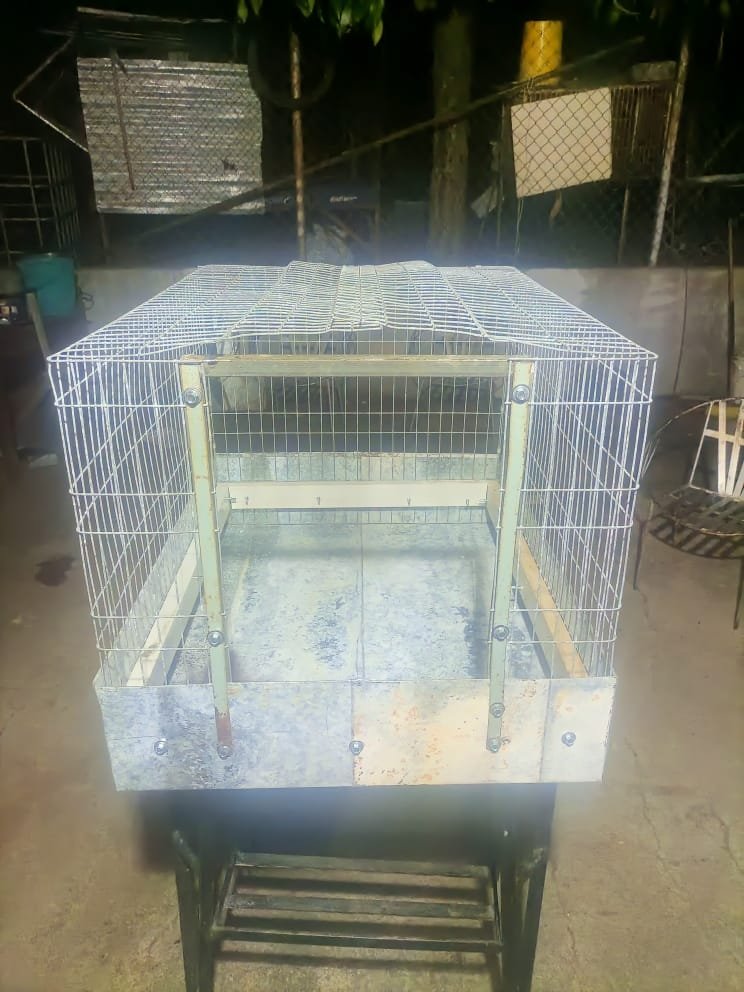
(English)
Today I show you a small project requested by @granja-Casalta which is dedicated to the breeding and sale of pigs in all its facets.
It is always a pleasure for me to get involved in manufacturing projects. Especially if resources are scarce or limited, because I think that creating when you have everything at hand is simply putting together a puzzle or a structure of Legos.
But the art of making something even if it is small but fully functional and with the least cost in resources, I think it is something that trains you to solve problems in the most inhospitable places or where you have to make the materials, resources or tools that you need.
Ingenuity, inventiveness and creativity are cultivated in this scenario, and good ideas start to flow in such a way that even you yourself are surprised at some of the ways you end up solving an issue.
When you strive to try to solve needs with few tools, you stimulate the brain to create solutions, and in your mind all that comes to mind are possible solutions.
On this occasion, the farmer confessed that he did not have the money to buy the materials needed to manufacture a model of a kennel or animal carrier.
But that is not the whole challenge; the animals to be transported are small piglets that will be sent to the interior of the country.
That doesn't sound very difficult or worrying either, but if we analyze the transport conditions in our country we can realize that it represents a risk for the animals and, on the other hand, these little piggies don't know how to keep calm and composure at the time of a trip.
And like strawberries on a cake, they are animals that defecate a lot and require a lot of hygiene.
With all these elements in mind, we decided to create a design that would suit both the farmer's budget and the piglets' need and comfort for an extended period of time.
The first thing we did was to determine what type of flooring the kennel would have, because some commercial models use heavy-duty synthetic grids, but their price is very high.
So I asked the farmer to recreate a corner of the farm in the kennel and copy the area where he raises them.
He explained to me that he keeps his piglets in their suckling stage in what is known as 'deep bedding' which consists of creating a mattress of shavings (wood, rice husks or very small chopped straw) where all fecal waste is concentrated without presenting a risk to the health of the animal or emanating bad odors in an alarming way.
Taking that idea, we decided to make a deep tray with 20mm galvanized sheets that would contain 15 centimeters of shavings for the piglets' comfort. Here we solved the floor.
But how would we make the sides? Anyone who has worked with these animals knows that their temperament is very given to chewing everything, picking with their snouts and trying to break with their fangs.
On the tour I noticed some cages for laying hens that were unoccupied. I mentioned to the farmer that welded wire mesh would be a good solution because they are very strong and at the same time light.
He agreed, and we set to work.
The first thing we had to do was to join the two sections of sheeting that did not meet the minimum size.
I decided to couple them both with a shared double to avoid possible filtrations of the waste of the animals.

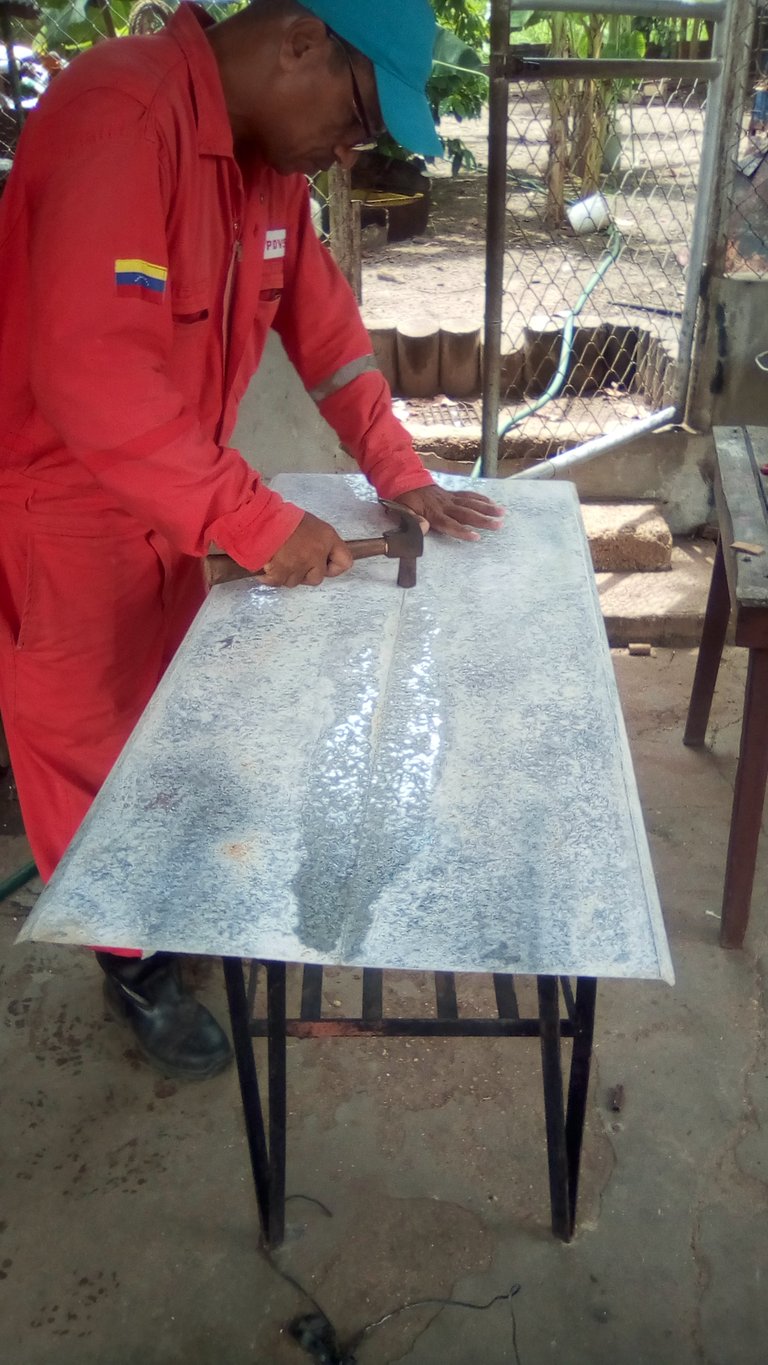
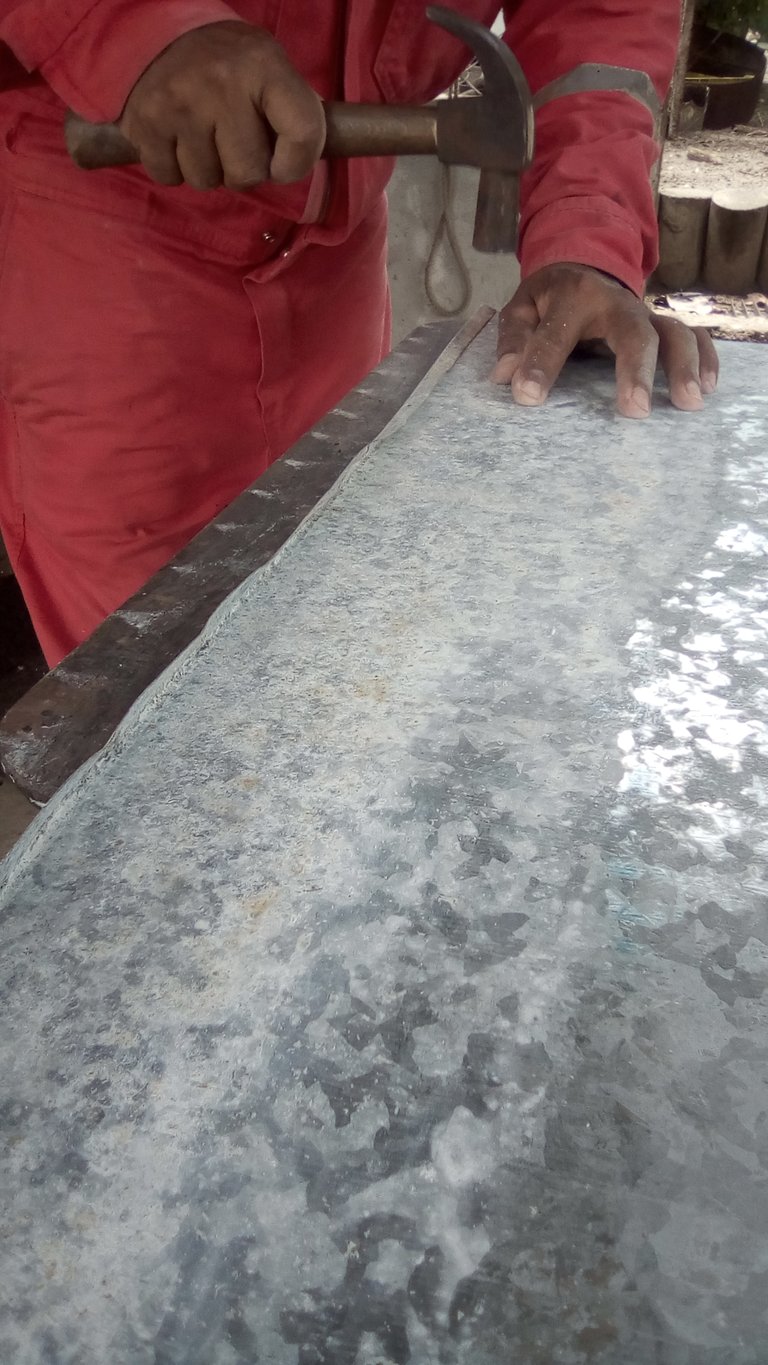
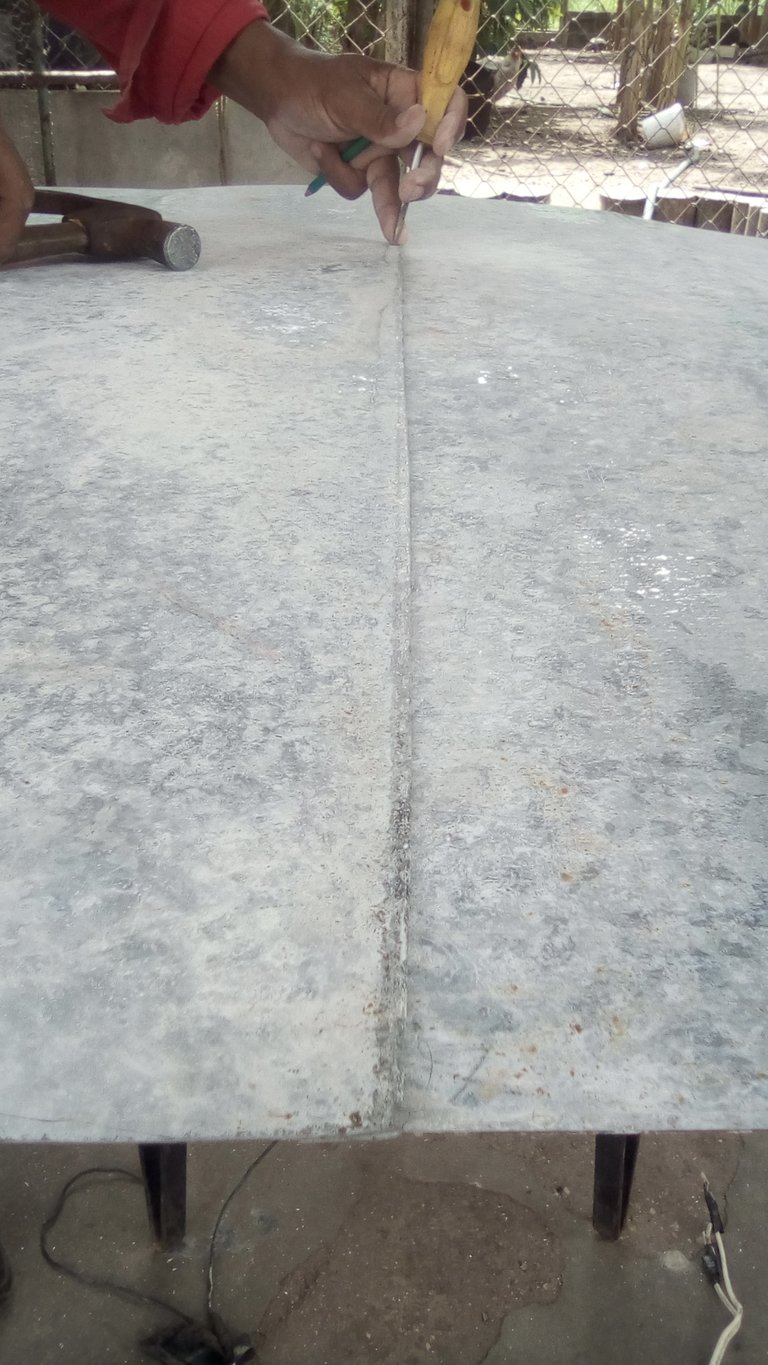

Then, we turned these sheets into a single one and then we transformed it into a tray of 60 centimeters by 80 centimeters and a height of 16 centimeters.
Then we made several doubles to the electrowelded mesh to take advantage of it to the maximum and we fixed it with self-tapping screws to an aluminum beam that was there, all this to give firmness to the sides.
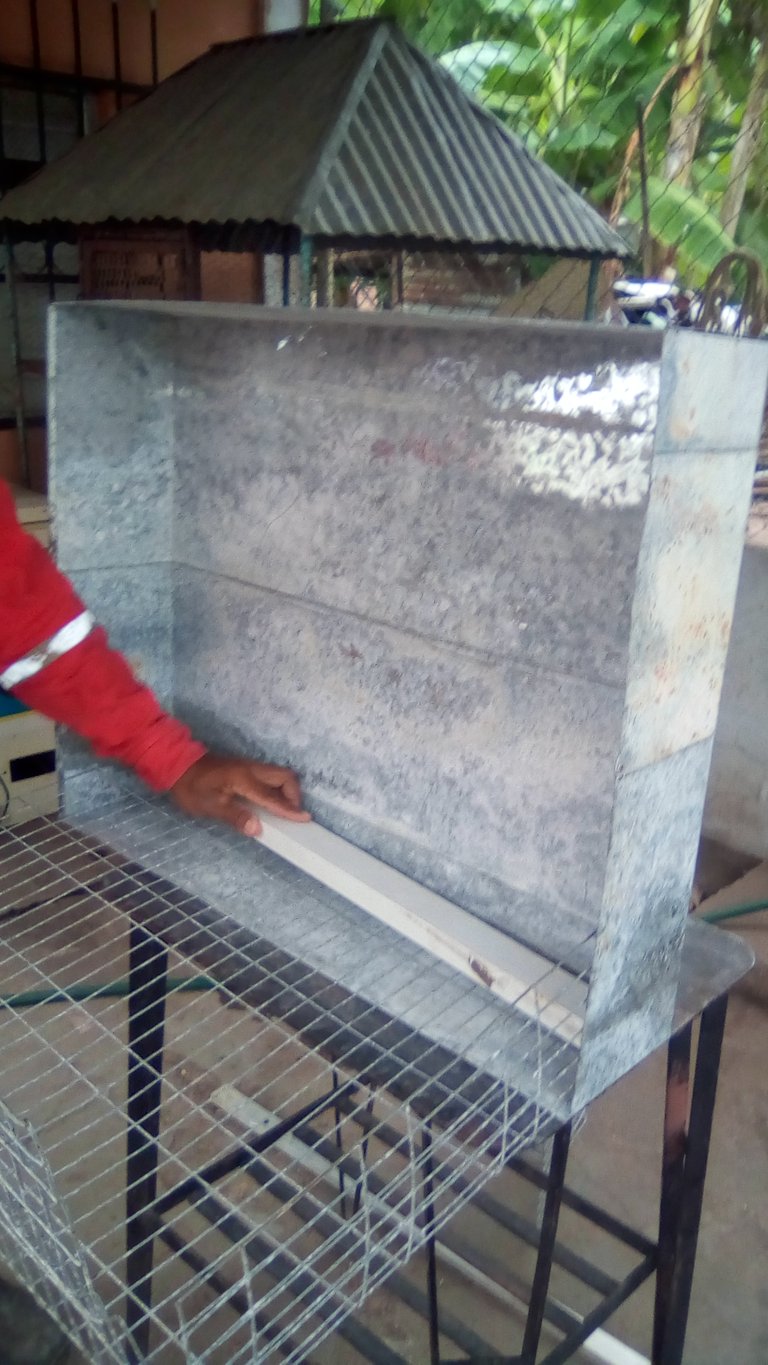

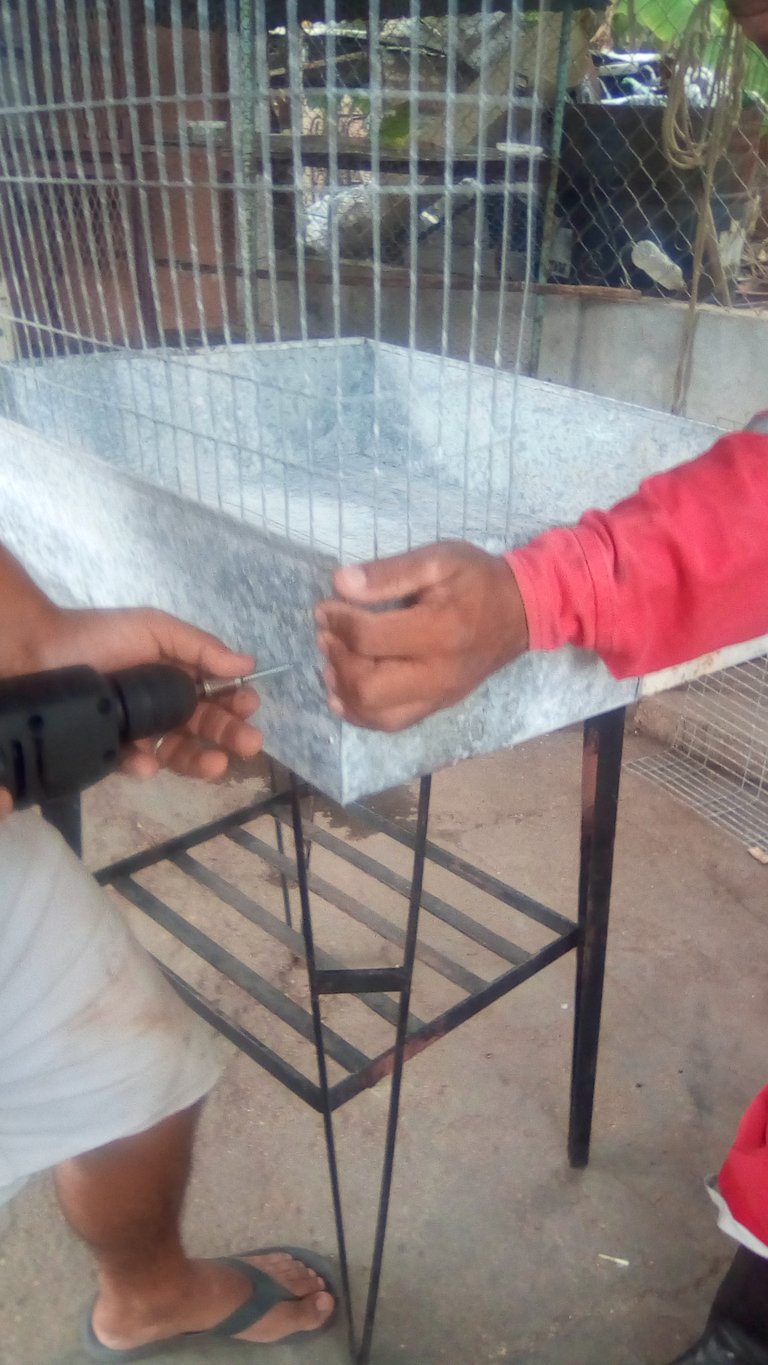
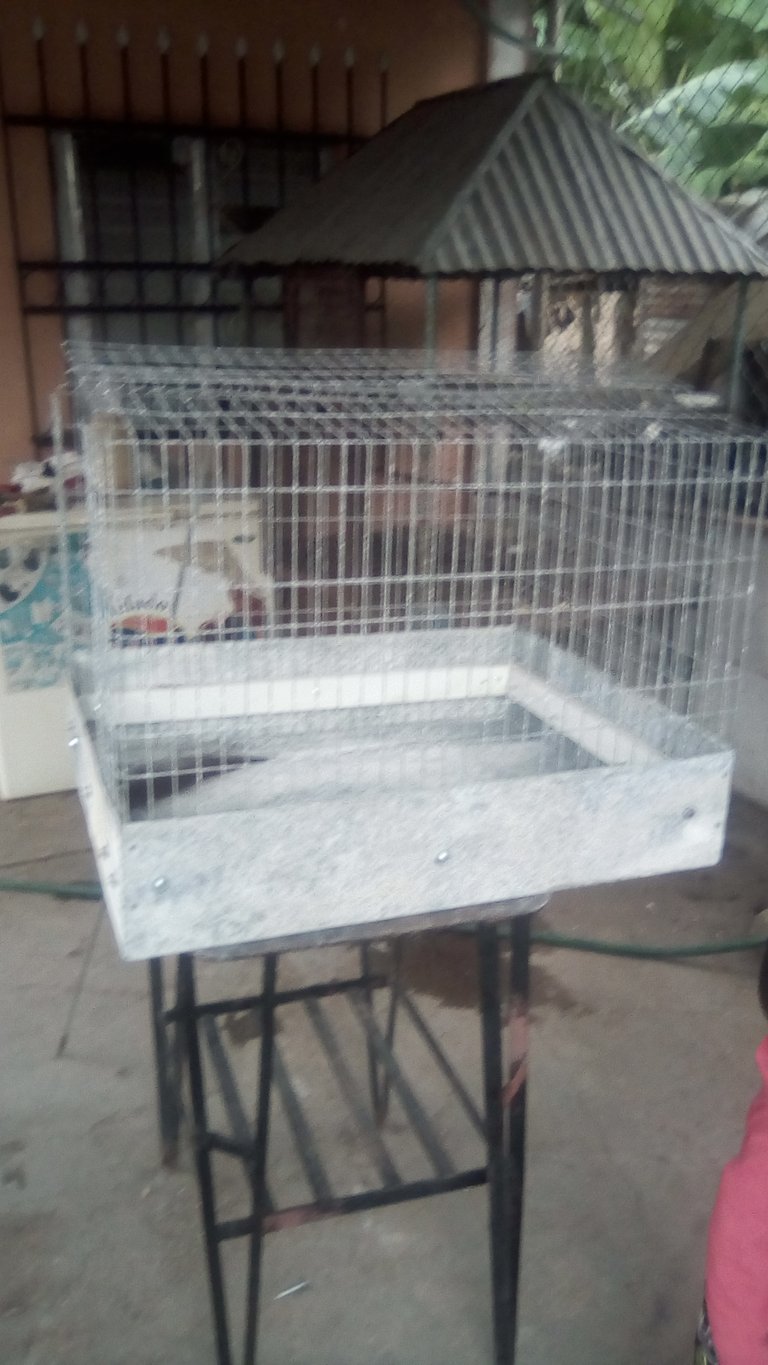

With this step taken care of, I decided to remove some hinges from an old cage door and a piece of 2mm by 2mm angle beam of 0.5mm thickness that would be used for the door frame.
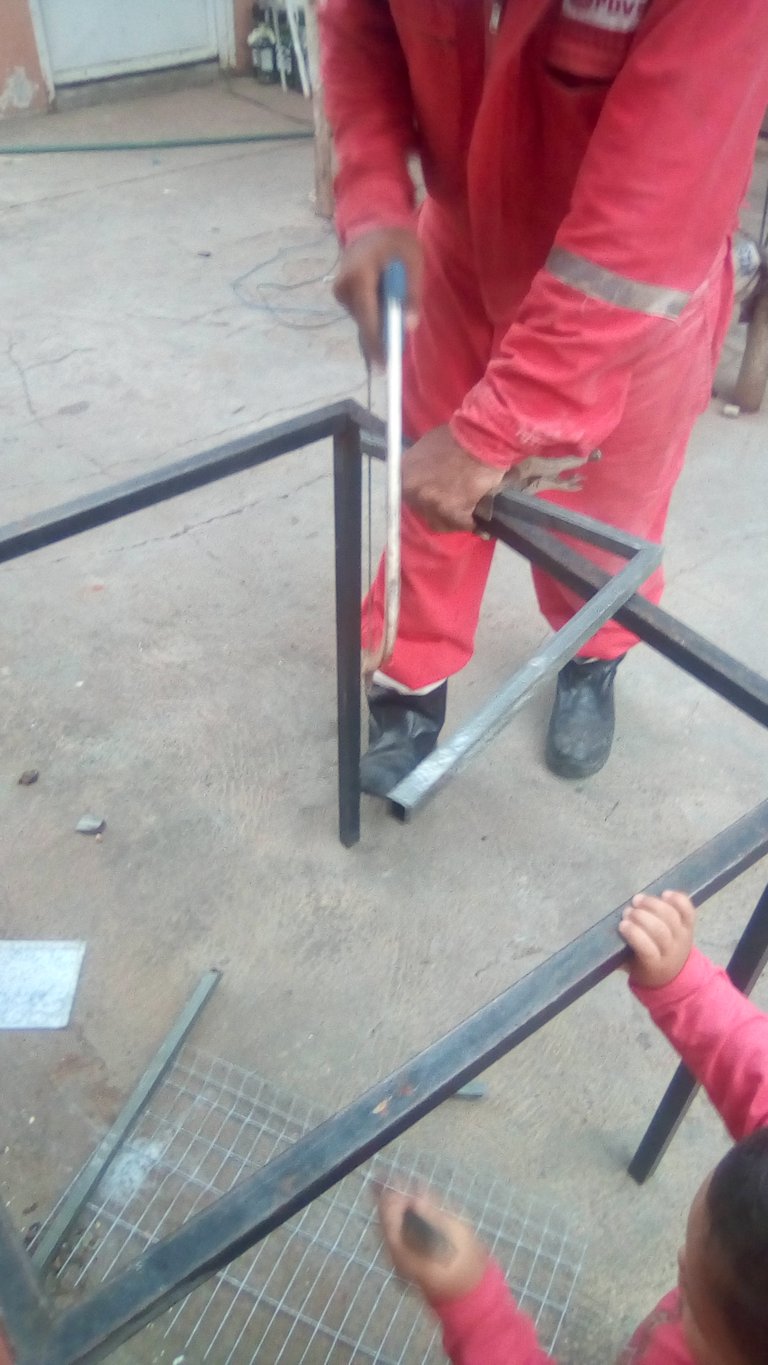
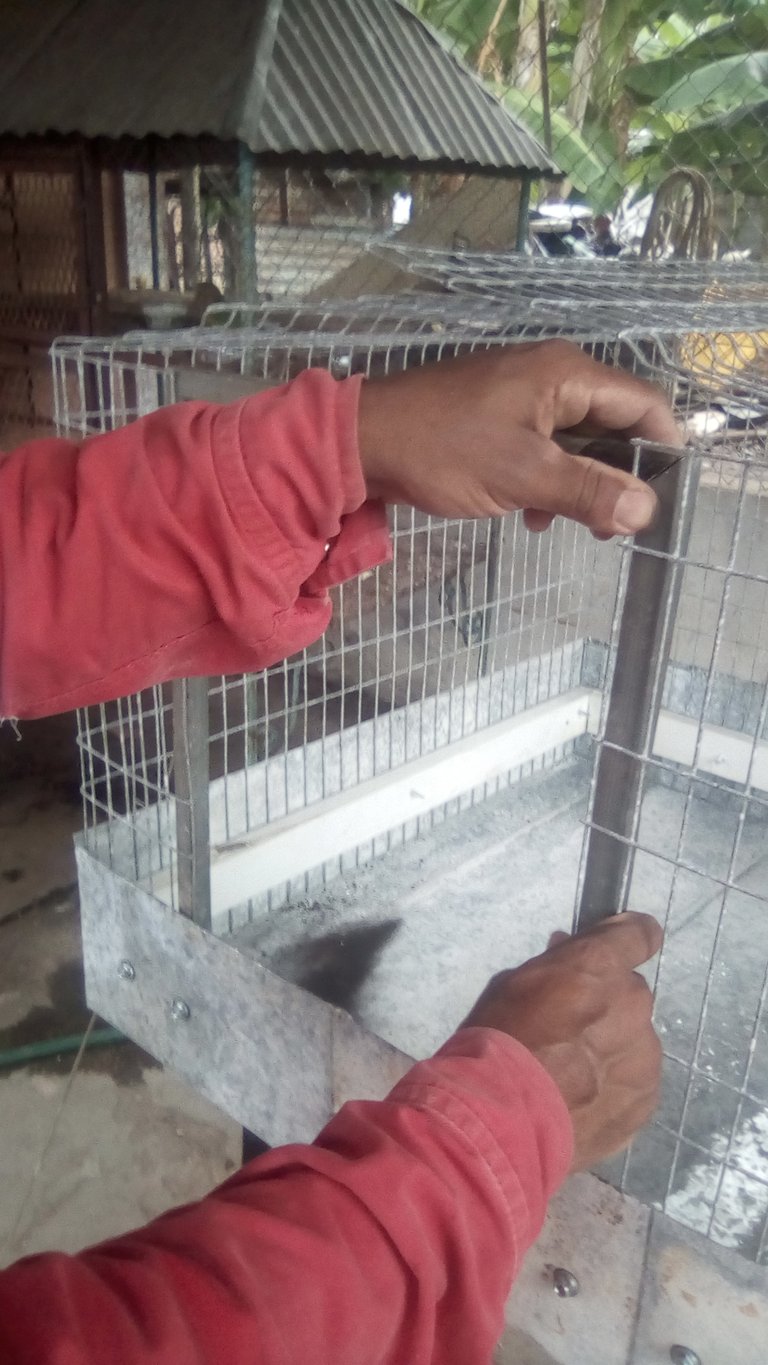
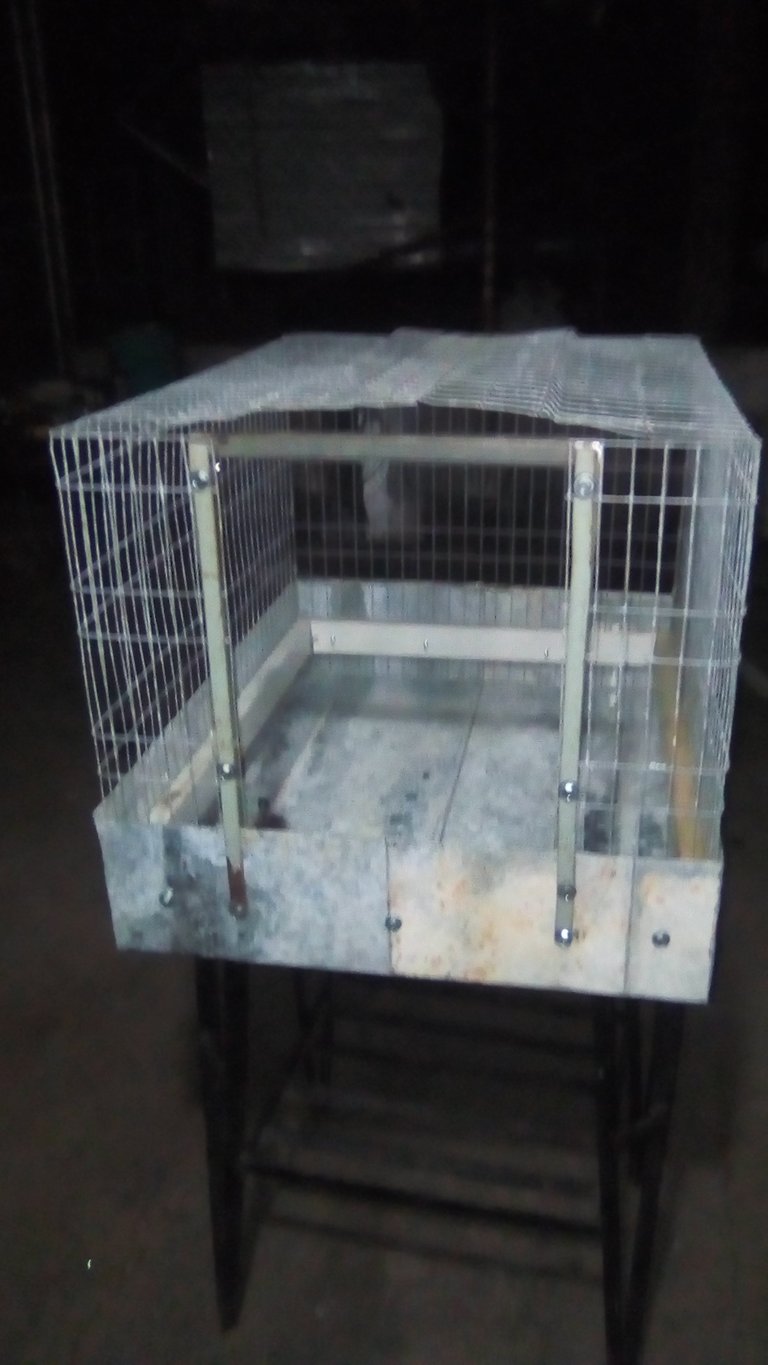
Finally, we staple the mesh joint with small strips of foil to simulate in the best way the commercial strapping used to assemble this type of cages. And that's it.

A kennel with a very good finishing aspect, economical, functional and cozy for the transfer or transport of the small piglets of Granja Casalta.
We are at your disposal if you want to know more details, or if you want to make something like this.
You can find me in the Discord channel as @afonzovalle21#1961
I hope you find this information useful.



(Español)
Hoy les muestro un pequeño proyecto solicitado por @granja-Casalta que se dedica a la cría y venta de cerdos en todas sus facetas.
Siempre es un placer para mí involucrarme en proyectos de fabricación. Sobre todo si los recursos son escasos o limitados, porque yo pienso que crear cuando tienes todo a la mano es simplemente armar un rompecabezas o una estructura de Legos.
Pero el arte de fabricar algo aunque sea pequeño pero completamente funcional y con el menor costo en recursos, creo que es algo que lo entrena a uno a resolver problemas en los lugares más inhóspitos o donde tienes que fabricar los materiales, recursos o herramientas que te hagan falta.
El ingenio, la inventiva y creatividad se cultiva en este escenario, y las buenas ideas empiezan a fluir de tal manera que hasta tu mismo te sorprendes de algunas maneras como terminas resolviendo un asunto.
Cuando uno se esfuerza por tratar de resolver necesidades con pocas herramientas, estimulas al cerebro a crear soluciones, y en tu mente todo lo que vienen son posibles soluciones.
En esta ocasión, el granjero confesó no tener dinero para la compra de los materiales necesarios para fabricar un modelo de jaula tipo 'Kennel' o transportadora de animales.
Pero ese no es todo el reto; los animales a transportar son pequeños lechones de cerdo que serán enviados al interior del país.
Eso no suena muy difícil ni preocupante tampoco, pero si analizamos las condiciones de transporte en nuestro país podemos darnos cuenta de que representa un riesgo para los animales y, por otro lado, estos pequeños puerquitos no saben de mantener la calma y compostura a la hora de un viaje.
Y como fresa sobre un pastel, son animales que defecan mucho y exigen de mucha higiene.
Teniendo todos estos elementos en lista, decidimos crear un diseño que se adaptará tanto al presupuesto del granjero cómo a la necesidad y comodidad de los lechones para un lapso prolongado de tiempo.
Lo primero que hicimos fue determinar que tipo de piso llevaría el Kennel, porque algunos modelos comerciales usan rejillas sintéticas de alta resistencia, pero su precio es muy elevado.
Así que le plantee al granjero recrear un rincón de la granja en el Kennel y copiar el área donde los levanta.
Él me explica que sus lechones los mantiene en su etapa lactante en lo que se conoce como 'cama profunda' que consiste en crear un colchón de virutas (de madera, cáscara de arroz o paja picada muy menuda) dónde se concentran todos los reciduos fecales sin presentar un riesgo a la salud del animal ni emana malos olores de forma alarmante.
Tomando esa idea, decidimos fabricar una bandeja profunda con laminas galvanizadas de 20mm que contendría 15 centímetros de viruta para la comodidad de los lechones. Aquí resolvió lo del piso.
Pero ¿como haríamos los laterales? Quien haya trabajado con estos animales saben que su temperamento es muy dado a morderlo todo, hurgar con su ocico y tratar de romper con sus colmillos.
En el recorrido observé algunas jaulas para gallinas ponedoras que estaban desocupadas. Le mencioné al granjero que la malla electrosoldada sería una buena solución porque son muy fuerte y a la vez livianas.
El estuvo de acuerdo, y emprendimos la actividad.
Lo primero que tuvimos que hacer fue empatar las 2 secciones de laminas que no alcanzaban la medida mínima.
Decidí acoplarlas a ambas con un dobles compartido para evitar posibles filtraciones de los residuos de los animalitos.





Luego, estás laminas la convertimos en una sola ya luego la transformamos en una bandeja de 60 centimetros por 80 centímetros y una altura de 16 centímetros.
En seguida le hicimos varios dobles a la malla electrosoldada para aprovecharla al máximo ya fijamos con tornillos autoroscantes a una viga de aluminio que tenía por allí, todo esto para darle firmeza a los laterales.





Con esta etapa resuelta, decidí quitarle unas bisagras a la puerta de una jaula vieja y un trozo de viga angular de 2mm por 2mm de un espesor de 0,5mm que serviría para el marco de la puerta.



Por último, grapamos la junta de la malla con pequeñas tiras de lámina para simular de la mejor manera el fleje comercial que se usa para armar este tipo de jaulas. Y listo.

Un Kennel con muy buen aspecto de acabado, economico, funcional y acogedor para el traslado o transporte de los pequeños lechones de Granja Casalta.
Estamos a la orden si desean saber más detalles, o si desean fabricar algo como esto.
Me pueden encontrar en el canal Discord cómo @afonzovalle21#1961
Espero les sea útil está información.


Feliz semana para tí y los tuyos.Hola @afonzovalle21. Gracias por socializar y compartir este proyecto. Es de gran utilidad para el transporte de animales. Las medidas estarán relacionadas al tipo de animal. Producción a bajo costo. Excelente. Éxitos en tus emprendimientos.
Hola @almajandra es un gusto para mí saber que te agrado mi publicación. Estamos a la orden. Gracias por tus saludos, bien recibidos. Te voy a seguir. Saludos
Nice one